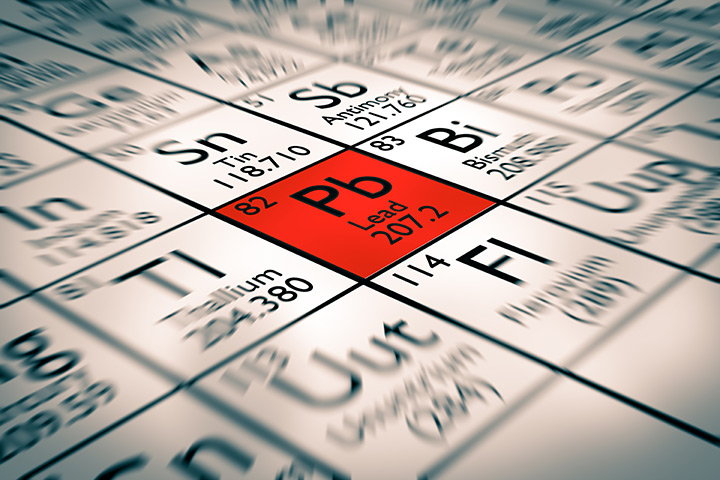Lead (Pb) in air and/or bulk samples (paint chips, dust wipes, soil, waste water, drinking water)

Lead has long been recognized as a harmful environmental pollutant. In late 1991, the Secretary of the Department of Health and Human Services called lead the “number one environmental threat to the health of children in the United States.” There are many ways in which humans are exposed to lead: through air, drinking water, food, contaminated soil, deteriorating paint, and dust. Airborne lead enters the body when an individual breathes or swallows lead particles or dust once it has settled. Before it was known how harmful lead could be, it was used in paint, gasoline, water pipes, and many other products.
Old lead-based paint is the most significant source of lead exposure in the U.S. today. Harmful exposures to lead can be created when lead-based paint is improperly removed from surfaces by dry scraping, sanding, or open-flame burning. High concentrations of airborne lead particles in homes can also result from lead dust from outdoor sources, including contaminated soil tracked inside, and use of lead in certain indoor activities such as soldering and stained-glass making.
Regulations
The following regulatory agencies deal with Lead (Pb) issues:
- US Environmental Protection Agency (Renovation & Repair Program, RRP)
- Housing & Urban Development (HUD)- Section 8 Program for Drinking water & Ambient Air
- Consumer Product safety Commission (CPSC) for kids toys & jewelries
- Occupational Safety & Health Administration (OSHA)
- Food & Drug Administration (FDA) for Glass & Ceramic Food Ware
Regulatory Levels for Lead (Pb)
- Drinking Water Standards: 15 ppb (µg/L)
- TCLP (Waste Characterization): 5 ppm (mg/L)
- WA-DOE Cleanup (MOTCA) Soil- 250 ppm (mg/kg)
- Lead in Paint: 1.0 mg/cm2 or 5,000 µ g/g (0.5% or 5,000ppm)
- Lead in surface dust: Floors- 40 µg/ft2, Window sill- 250 µg/ft2
- Window well- 800 µg/ft2 OSHA Action Level- 30 µg/m3 (PEL)- 50 µ g/m3
- EPA Ambient Air Standards- 0.15 μg/m3
- Consumer Product- 600 ppm (mg/kg)
- Children’s Products (Lead content)- 300ppm, (Paint/surface coating)- 90 ppm
- FDA-Ceramic Glass & Food Ware – 0.5 ppm to 3.0 ppm
- California Proposition 65 (Tableware) – 0.1ppm to 0.2ppm
Our Lab Services
- NIOSH 7082(FLAME AA)- Air Filter
- EPA 7000B (FLAME AA) – Paint Chips/Soil/Dust Wipes/Waste Water
- EPA 1311/7000B (FLAME AA) – TCLP
- NOISH 7105 (GFAA) – Air Filter
- EPA 7010 (GFAA) – Paint Chips/Soil/Dust Wipes/Waste Water
- EPA 200.9 (GFAA) – Drinking Water
- NIOSH 7300 (ICP) – Air Filter
- EPA 6010 (ICP) – Paint Chips/Soil/Dust Wipes/Waste Water
- EPA 1311/6010 (ICP) – TCLP


